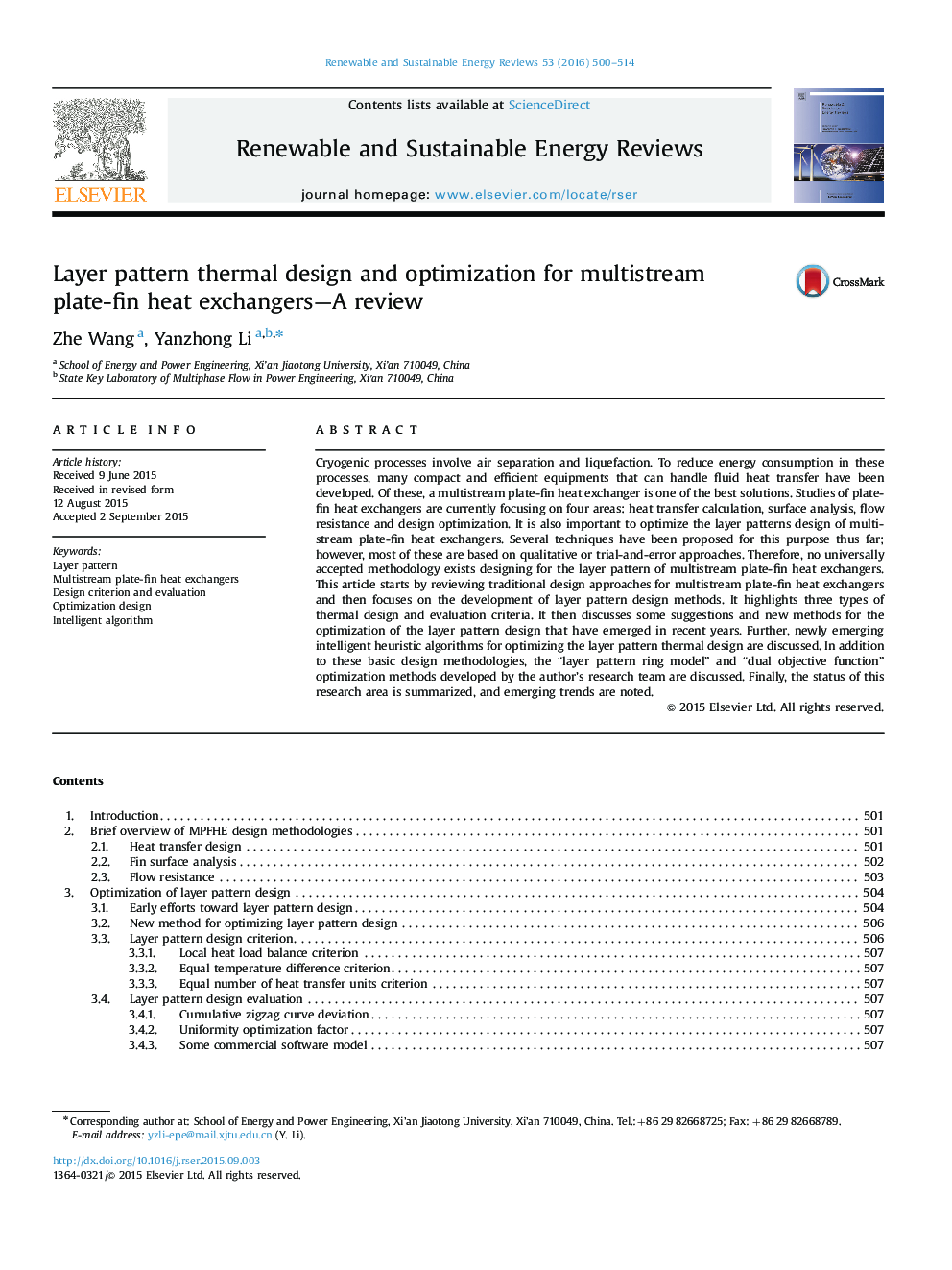| Article ID | Journal | Published Year | Pages | File Type |
|---|---|---|---|---|
| 8115587 | Renewable and Sustainable Energy Reviews | 2016 | 15 Pages |
Abstract
Cryogenic processes involve air separation and liquefaction. To reduce energy consumption in these processes, many compact and efficient equipments that can handle fluid heat transfer have been developed. Of these, a multistream plate-fin heat exchanger is one of the best solutions. Studies of plate-fin heat exchangers are currently focusing on four areas: heat transfer calculation, surface analysis, flow resistance and design optimization. It is also important to optimize the layer patterns design of multistream plate-fin heat exchangers. Several techniques have been proposed for this purpose thus far; however, most of these are based on qualitative or trial-and-error approaches. Therefore, no universally accepted methodology exists designing for the layer pattern of multistream plate-fin heat exchangers. This article starts by reviewing traditional design approaches for multistream plate-fin heat exchangers and then focuses on the development of layer pattern design methods. It highlights three types of thermal design and evaluation criteria. It then discusses some suggestions and new methods for the optimization of the layer pattern design that have emerged in recent years. Further, newly emerging intelligent heuristic algorithms for optimizing the layer pattern thermal design are discussed. In addition to these basic design methodologies, the “layer pattern ring model” and “dual objective function” optimization methods developed by the author's research team are discussed. Finally, the status of this research area is summarized, and emerging trends are noted.
Related Topics
Physical Sciences and Engineering
Energy
Renewable Energy, Sustainability and the Environment
Authors
Zhe Wang, Yanzhong Li,
